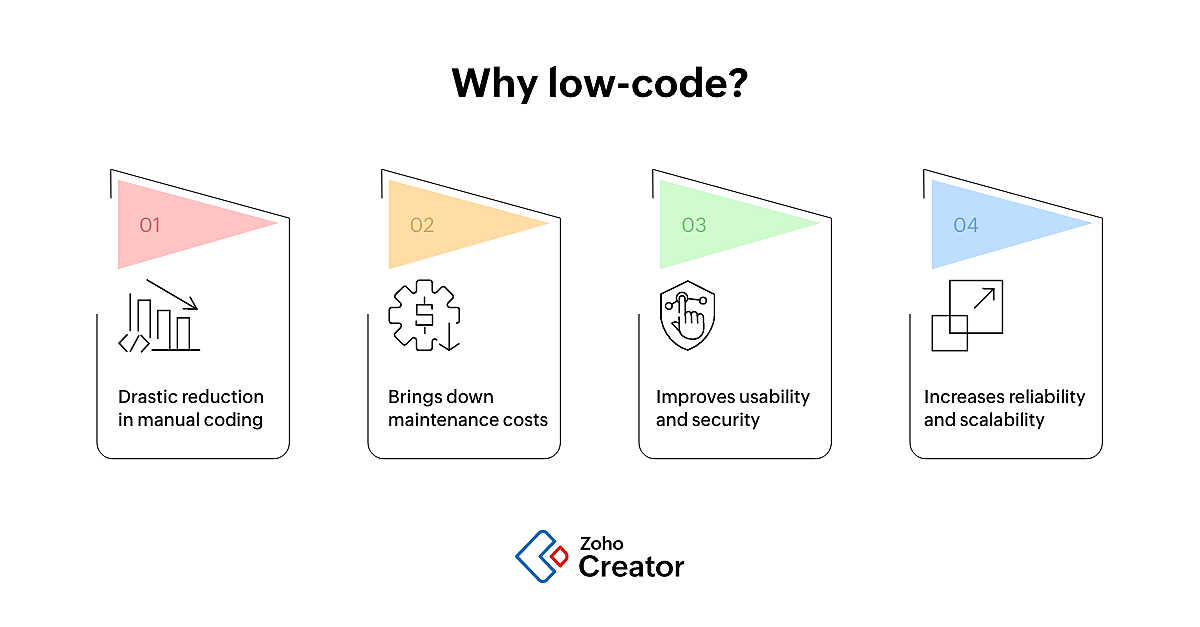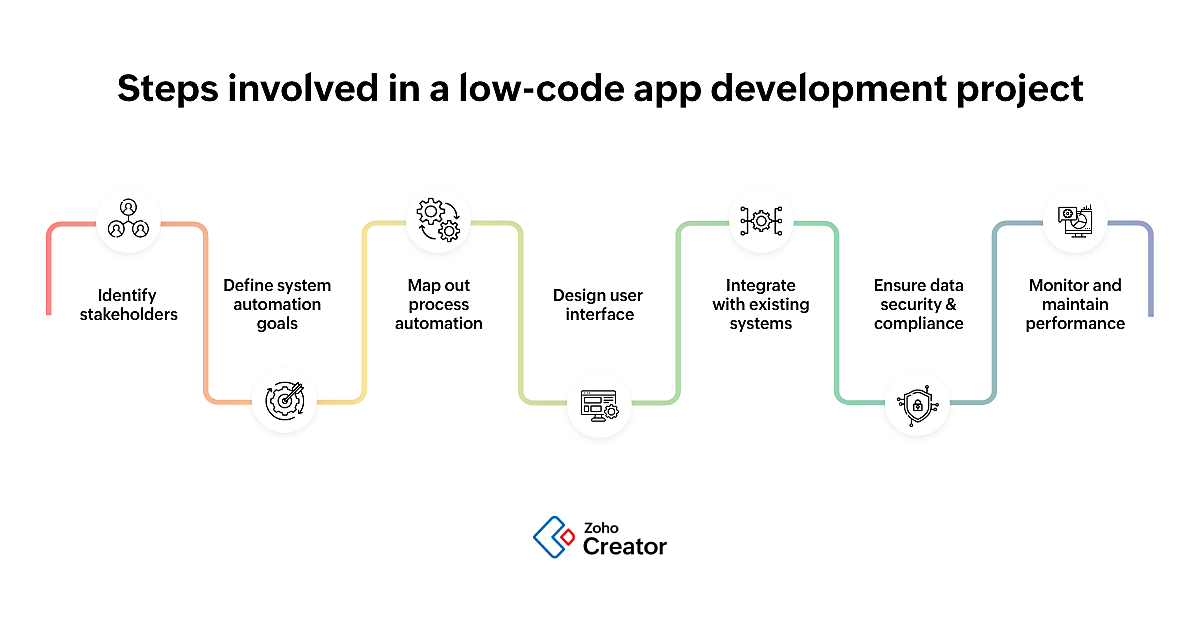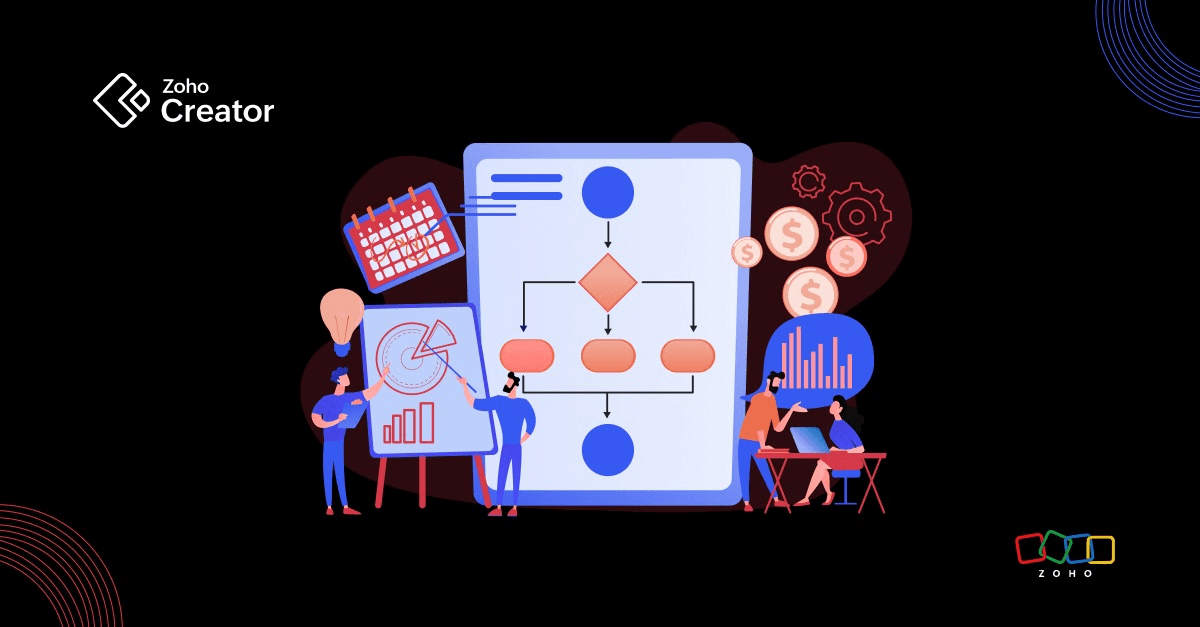- HOME
- Know Your Tech
- Low-code development: Crafting an effective business blueprint
Low-code development: Crafting an effective business blueprint
- Last Updated : August 14, 2023
- 666 Views
- 10 Min Read
Creating a successful business blueprint for low-code development is key to ensuring that your system runs smoothly and effectively. Low-code solutions enable companies to quickly automate their processes without having to resort to traditional software engineering, which can be incredibly time-consuming and expensive.
In this blog post, we'll look at the most vital aspects of an effective blueprint, so you can make sure everything goes according to plan. We'll dive into how scalable and flexible these platforms are and what features should be included in your personalized model, as well as ways businesses use analytics for optimization purposes.
Understanding low-code development
Low-code development is gaining traction as a more efficient way to develop custom software applications. It provides users with graphical user interfaces and other abstractions that help them build powerful apps in minimal time, without the need for deep technical knowledge or costly resources. This makes it an attractive solution for small businesses looking to create web-based solutions quickly, while still staying within budget.
At its core, low-code simplifies the design, development, and deployment process by eliminating manual coding processes, such as HTML/CSS editing. Due to this streamlining capability, companies can now produce new products much faster than traditional methods like programming logic creation would allow. This reduces costs significantly in terms of both money and labor invested upfront.
Low-code also comes equipped with scalability features which reduce maintenance costs even further, by allowing fast feature addition without overburdening existing functionality; not only does this increase usability but it's great from a security standpoint, due to the lowered attack vector potential arising from a modular architecture where developers install components solely for specific needs, instead of having unneeded modules running at all times.
Low-code offers numerous advantages compared to old-school methods—accelerating application delivery speed (quick) whilst cutting down on upfront investments needed (cheap). There are additional benefits besides these, including increased reliability and scalability, combined with strong authentication tools built-in, that let businesses rest assured knowing their data will remain safe, regardless of the technological advances that occur during the product’s life cycle.
 The importance of a business blueprint
The importance of a business blueprint
Having a solid plan and strategy is essential to creating a successful business, especially when it comes to low-code development. Crafting an effective blueprint for your project gives you the foundation needed for success in implementation and growth.
If we want our product or service to outshine competitors in the marketplace, several core components must be taken into account before starting this journey: firstly, defining every aspect of what needs achieving with this type of development; secondly, designing a user-friendly experience so customers have no issues interacting with us through platforms such as Salesforce or Dynamics; and finally, monitoring how well we do against established key performance indicators (KPIs).
This way, businesses can maximize their chances of reaching their goals successfully, while keeping ROI high over time.
 Identifying stakeholders in the process
Identifying stakeholders in the process
When it comes to a low-code application development project, the most important thing is identifying all stakeholders and their roles. Stakeholders may be both internal (employees) and external (customers), but you must understand how they're going to influence the outcome of a business application.
The first step in this process should be creating a list of people making decisions or providing input during development: executives, key decision-makers within the organization, employees who will use/interact with the app regularly, and customer-facing personnel responsible for service activities involving the product/service. Each individual has their own requirements that need taking into account when designing your framework.
Stakeholders without authority still have an interest in its success; these may include shareholders or vendors/partners associated with the company that need to be included when developing an effective blueprint, so their interests can be taken into account accordingly.
It's vital to consult relevant parties properly, from start to finish, as valuable input helps guarantee a successful launch and adoption, once released on the market. Understanding stakeholder contributions, as well as their needs, builds consensus among teams, speeding up time to market while ensuring better quality outcomes. This is paramount if looking at maximizing benefits from low-code applications later down the line.
Defining system automation goals
System automation is essential for a successful business blueprint, when it comes to low-code development. It decreases the manual labor requirement, saving time and money while minimizing potential mistakes associated with traditional processes and reducing data loss or incorrect results.
Setting clear goals is therefore imperative if businesses want their system automation to succeed. These objectives must be specific to each organization’s needs; while an e-commerce website may prioritize quicker customer service responses, manufacturing companies could benefit more from faster-automated production systems to increase efficiency and reduce waste.
Well-defined targets guarantee that the beginning stages of implementation go smoothly, so costly errors can be avoided later down the line due to inadequate forethought or planning.
When defining these targets, both short-term aims—like cutting costs correlated with manual labor plus increasing proficiency through auto processing—just as long-range plans—such as improving user experience by providing speedier support reaction times—must not be overlooked. Staying one step ahead of competitors that use mechanized tech solutions earlier than you do should also factor into your overall strategy here.
Also remember that budget limitations, alongside timetables for execution plus existing infrastructures, need to be taken into account before coming up with any effective solution. Cloud computing services and third-party suppliers who specialize in low-code development are all possible additions here, too.
Don't forget how continually changing technology forces us to consider our present requisites, alongside how those requirements might differ over future periods, thus enabling us to remain competitive while still minimizing expenditures.
Mapping out business process automation
Business process automation (BPA) is a great asset for low-code development, as it simplifies tasks and enhances efficiency. BPA involves using technology to automate labor-intensive jobs or processes, improving accuracy while also reducing operational costs and providing better customer service. When planning the implementation of BPA in a project related to low-code development, some important elements have to be taken into account.
Firstly, data integration needs consideration, which means connecting different systems—such as databases, applications, or websites—so they can communicate with each other without any issues. Doing this properly allows collected information from one system to be available on another system quickly and reliably.
Developing automated workflows lets users do their job more swiftly, since manual entry in diverse systems isn´t necessary, nor is manually moving files from one place to another whenever something must get done. Automation decreases mistakes by making sure all steps involved with an action happen correctly before proceeding with the next task. Plus, it lowers completion times by cutting down on time spent on redundant functions, like manually inputting data.
Additionally, it's pertinent to consider user experience when designing these workflows, due to its importance for customers in understanding how everything works before getting started. This helps ensure no navigation difficulties come up when starting to work on specific features inside the program itself, too.
Feedback coming from these users contributes to identifying sections where improvements could be made, like ensuring button colors indicate what will occur after clicking them, or adding cues to help navigate a particular procedure.
Bearing in mind these extra details when setting up business process automation not only increases overall efficacy but guarantees clients have enjoyable experiences when using your products/services, which increases loyalty over time.
Designing user interfaces for efficiency
Building an efficient and effective user interface is a crucial factor in realizing success when it comes to low-code development. In the age of digital transformation, having a great UI can be immensely beneficial for businesses. Low-code development offers advantages, such as speedy custom app production with minimal coding knowledge required; however, anyone who wishes to reap these benefits must ensure that their application's UI is both intuitive and functional for users.
The first step in designing optimal UIs involves determining exactly what the user hopes to do while using your product. Creating something visually appealing isn't enough on its own; you need to consider all potential use cases beforehand, so elements are displayed effectively across different screens, allowing them to find whatever they're searching for quickly, without too much effort expended navigating around the app. This ensures maximum efficiency during interactions with customers within your production environment.
It's also essential to include certain visual indicators located at strategic points across each page: color coding and call outs are just two examples of ways to make sure individuals intuitively understand which element they interact with in order to complete tasks in timely manner. But there’s more to it than that.
Animation and response times should be thoughtfully planned out as well. Making sure everything works together hassle-free helps in avoiding confusion and delays during transitions, while also enhancing overall experience.
Integrating with existing systems
Integrating with existing systems is an essential element of a profitable business model, when it comes to low-code development. These integrations help firms maximize the worth of their current investments while utilizing up-to-date technology for rapidly generating and activating applications. Integrating with present systems enables a simple transformation from obsolete frameworks to modern, organized solutions, as well as granting businesses access to new technologies like AI and ML. The key advantages to integrating with existing systems includes lower production costs, enhanced time-to-market performance, better customer encounters, and augmented efficiency.
When planning to put together different components via system integrations, there are multiple facets to consider carefully. Chief among them is safety—data should be protected against unauthorized entry, but verified users should have access to any required info.
These integrations must be designed to scale depending on the evolving wants and needs of the organization. Any changes made during this stage shouldn’t adversely affect either usability or efficacy.
To make sure each step taken during system integration is properly carried out, various tools come in handy. These tools include software creation kits (SDKs) and application programming interfaces (APIs), which give developers the opportunity to swiftly fuse varied segments without having to manually code every single constituent individually.
Many service providers specialize in system integrations, including helping businesses identify specific objectives before pushing forward on the actual implementation work itself.
Ensuring data security and compliance
Data security and compliance are crucial aspects of efficient business blueprints for low-code development. In today's digital world, data is incredibly valuable but also vulnerable to malicious actors; a single breach can cost organizations millions in lost revenue, fines, and reputational damage. Consequently, it has become essential for enterprises to guarantee that their data remains safe while satisfying regulatory requirements. Low-code development equips businesses with the effective means to accomplish these goals.
Low-code platforms enable companies to easily construct custom apps with minimal time investment or technical aptitude, using drag-and-drop toolsets. They also facilitate best practices related to information protection for applications tailored specifically to complying with various regulations. Say you want to build an app linking customer databases—users could swiftly set up authentication protocols like multi-factor authentication or implement encryption algorithms that meet the highest industry standards, such as AES-256 encryption, without much difficulty.
These solutions usually come packed full of robust logging capabilities. This allows administrators to track user activity within individually configured application environments, so they can identify any potentially unsafe behavior or unauthorized access attempts before any harm is done.
Moreover, low-code systems often offer further helpful features that make auditing procedures simpler, allowing IT personnel from multiple departments to conduct manual checks to ensure compliance with personal data management laws. This means that firms gain assurance that their applications are safe from unwarranted interference while also adhering to all relevant laws; and it doesn't hurt that it also saves money by dramatically simplifying the whole process.
Monitoring and maintaining performance
Monitoring performance and maintenance are two essential components for a successful business blueprint in low-code development. Performance monitoring enables businesses to identify any potential areas of improvement or customer expectations that can be implemented into their process flow for increased efficiency. By tracking the metrics of their system, companies can stay ahead of trends and anticipate challenges before they become too costly to fix.
Low-code platforms provide powerful tools which allow them to keep an eye on these performance measurements through detailed dashboards or visualizations—like heat maps and charts—giving teams the insights needed not only to make adjustments but also to optimize processes over time according to specific needs, all while maintaining PLM across the entire product life cycle.
 Adapting to changing business needs
Adapting to changing business needs
Modern businesses are constantly evolving to meet the changing needs of their customers, and low-code development is an essential tool for this purpose. Low-code platforms enable companies to quickly create specialized applications that can be up and running in no time at all.
This makes them a great choice when it comes to meeting customer demands with customized solutions within short deadlines. These prebuilt apps offer various customization options as well as saving resources spent on maintenance, which means lower costs over time, too.
Moreover, deploying low-code apps demands less effort compared to traditional software development methods, resulting in shorter deployment times and letting enterprises stay competitive by launching products faster.
Considering, thanks to their flexibility and cost-effectiveness, taking advantage of low-code applications helps organizations develop more effective business blueprints, enabling them to adapt rapidly while keeping laborious coding and complicated maintenance in check. This then leads to increased efficiency, which ultimately results in higher profits down the line.
Low-code development is the way to go when it comes to system and business process automation. But to employ this method successfully, having an effective business blueprint is of critical importance. This should consist of well-defined user requirements and a scalable architecture that allows for flexibility in design and capability changes, alongside an intuitive UI/UX design that enables easy navigation through application features, together with robust security protocols securing data integrity and privacy throughout the app life cycle. With these components, organizations can produce powerful applications that meet current digital standards and move them ahead of the competition, leading to success stories along their digital transformation journey.
Zoho Creator is a low-code platform that's built to help individuals make full use of their time, from managing tasks and deadlines to developing ambitions and creating timetables. With our user-friendly platform, it's easy to stay organized and ensure your time is well spent. There's no need to hesitate; signing up comes at zero cost—so take control of your digital transformation right now.
 Pranesh
PraneshPranesh is a serial entrepreneur and the Founder of Studio 31, a 12 year old, deep tech enabled, wedding photography and film company that has been recognized by many publications for its zero inventory model and unique culture in the unorganised sector.
Zoho Creator has helped Studio 31 redefine its business model by automating over 37 processes and save three hours every single day. He is also a growth consultant for Zoho Creator and helps the team address real-world challenges from a customer's point of view.



